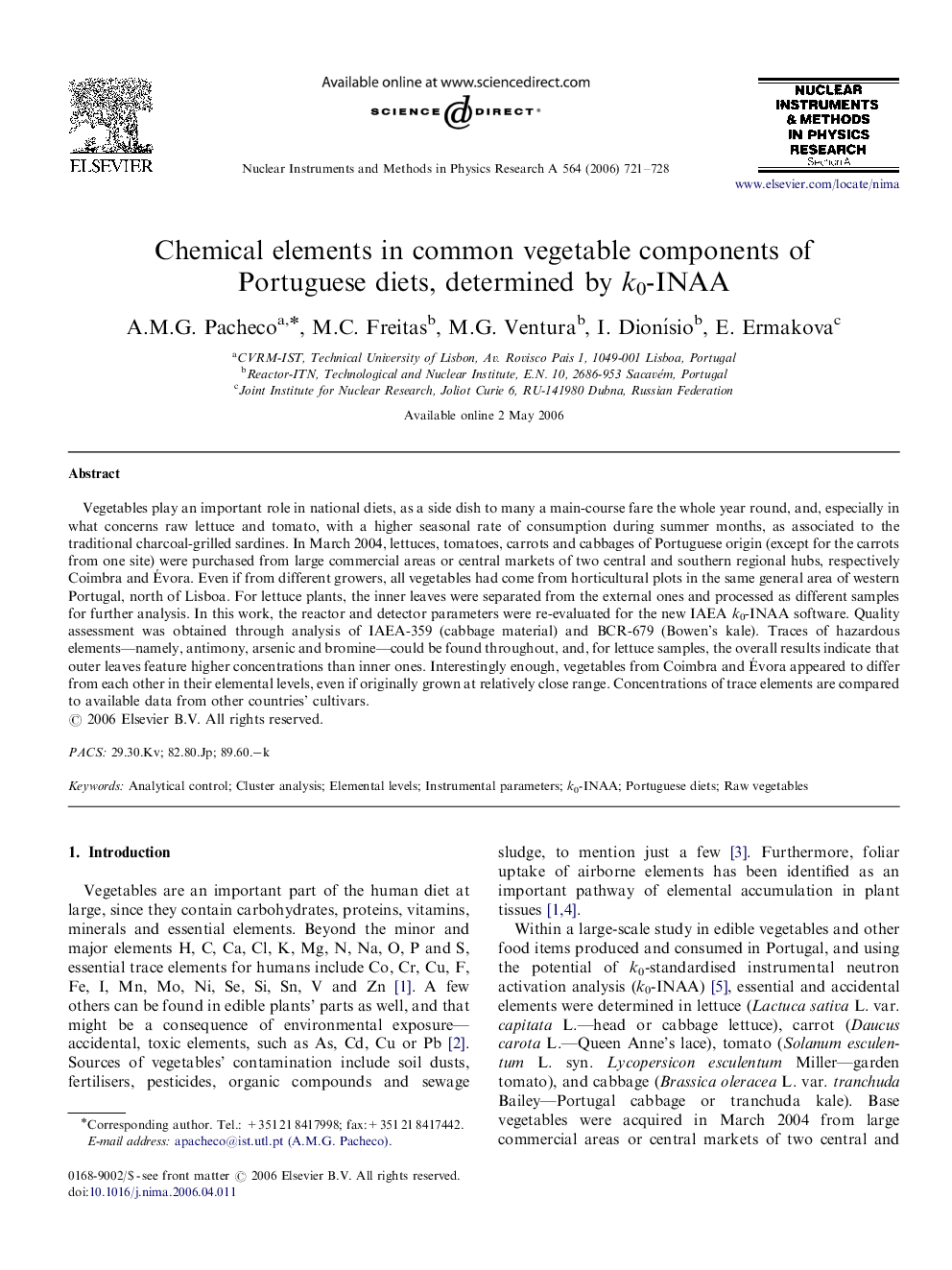| Article ID | Journal | Published Year | Pages | File Type |
|---|---|---|---|---|
| 1832713 | Nuclear Instruments and Methods in Physics Research Section A: Accelerators, Spectrometers, Detectors and Associated Equipment | 2006 | 8 Pages |
Vegetables play an important role in national diets, as a side dish to many a main-course fare the whole year round, and, especially in what concerns raw lettuce and tomato, with a higher seasonal rate of consumption during summer months, as associated to the traditional charcoal-grilled sardines. In March 2004, lettuces, tomatoes, carrots and cabbages of Portuguese origin (except for the carrots from one site) were purchased from large commercial areas or central markets of two central and southern regional hubs, respectively Coimbra and Évora. Even if from different growers, all vegetables had come from horticultural plots in the same general area of western Portugal, north of Lisboa. For lettuce plants, the inner leaves were separated from the external ones and processed as different samples for further analysis. In this work, the reactor and detector parameters were re-evaluated for the new IAEA k0-INAA software. Quality assessment was obtained through analysis of IAEA-359 (cabbage material) and BCR-679 (Bowen's kale). Traces of hazardous elements—namely, antimony, arsenic and bromine—could be found throughout, and, for lettuce samples, the overall results indicate that outer leaves feature higher concentrations than inner ones. Interestingly enough, vegetables from Coimbra and Évora appeared to differ from each other in their elemental levels, even if originally grown at relatively close range. Concentrations of trace elements are compared to available data from other countries’ cultivars.
